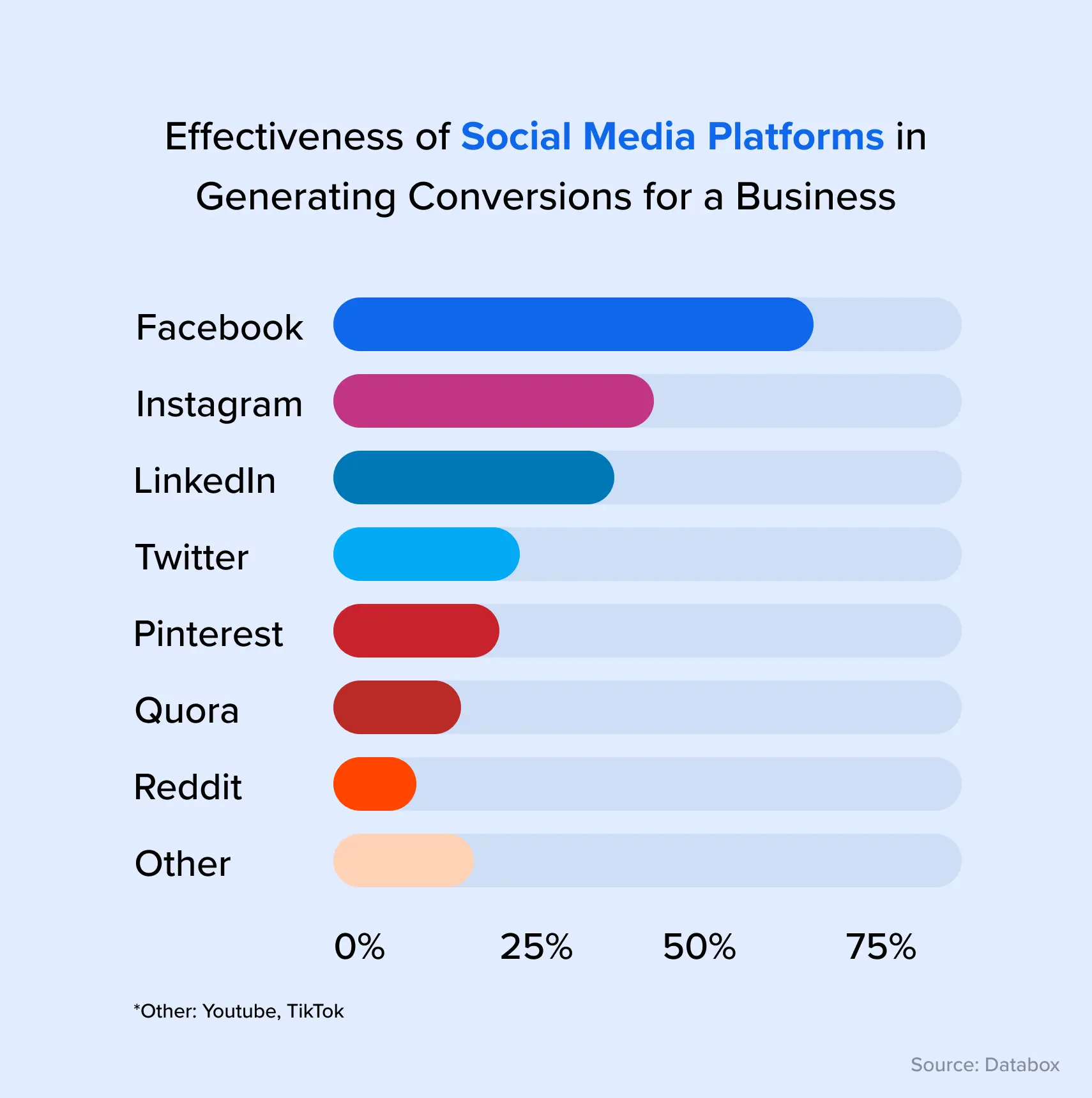More About Conversion Rate
Any business or other user can analyze social media conversion, which allows you to determine the types of messaging, content, or campaigns that are most effective in generating conversions. Such an analysis helps you adjust your social media strategy accordingly.
So, what is conversion rate all about?
A high conversion rate essentially means a good level of interest and interaction with a brand’s content on various platforms, including social media.
Conversely, a low conversion rate could indicate non-performance of the marketing strategy, requiring its optimization.
And, how to calculate the conversion rate?
You can calculate your conversion rates by simply dividing the number of conversions from social media traffic by the number of visitors clicking on your social media links. The result is multiplied by 100 to obtain a percentage.
The conversion rate formula for calculating your business conversion is thus

Let us look at an example of conversion rate.
If a website records 1,000 visitors, and 50 of the visitors make a purchase, the conversion rate would be calculated as

Some ways to ensure that your social media content is eye-catching and works toward converting the target audience into consumers are as follows:
- Add links in your bio section
- Add ‘swipe-up’ links for Stories
- Include custom-built links from influencers
- Post live product demos
- Integrate purchase links
In case your marketing campaigns on social media are not giving you the conversion rate you are looking for, you can follow these steps to manage your social media profile and drive engagement and conversions:
- Improve your call to action
- Get influencers on board
- Use hashtags
The ideal conversion rate on social media varies among platforms per the business niche and product categories.
The below image shows the effectiveness of various social media platforms in generating conversions, according to a study.



